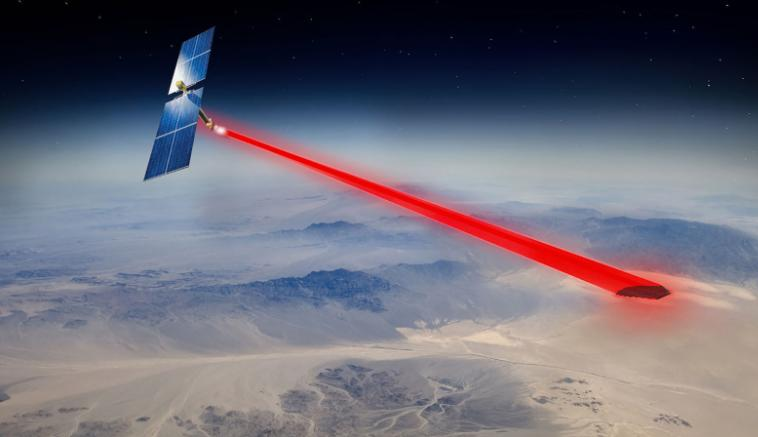Americans and Chinese are looking for military satellites that are energetically autonomous and capable of emitting microwave beams over long distances.
The PRAM
Launched for the first time in May 2020, the PRAM (Photovoltaic Radio-frequency Antenna Module) project, which dates back to 2009, is delivering encouraging initial results. This project was funded and developed by the U.S. Naval Research Laboratory (NRL) and implemented by the Space Force X-37B. The PRAM is considered the first orbital experiment designed to convert sunlight into energy and then transmit it through a microwave beam.
Interesting performances
The latest experiments would show that the 30 cm square photovoltaic module is capable of producing and storing about 10 watts of energy, just enough to power a laptop. But if the project materializes, it could then lead to a dedicated satellite containing two panels of about 10 modules each, to provide additional power to a satellite, drones, or infantry in the most remote locations.
Multiplication of projects
Nevertheless, a crucial test will be carried out over the next few months to validate the demonstrator's ability to return energy directly to earth. The latest experiments have shown that it was possible to transmit the energy produced over more than 6,000 km, but these have yet to be validated in real conditions. In 2019, Northrop Grumann won a $100 million contract from the AFRL to develop a space solar station based on this principle. The fact that the PRAM experiment is being conducted from the X-37B, and that the Chinese army has launched a similar project, demonstrates the potential of this theme. One of the military applications of such a project could also aim to have an energy autonomous microwave weapon to remotely disrupt the electrical equipment of satellites in order to neutralize them.
Découvrez cet article sur Air&Cosmos

